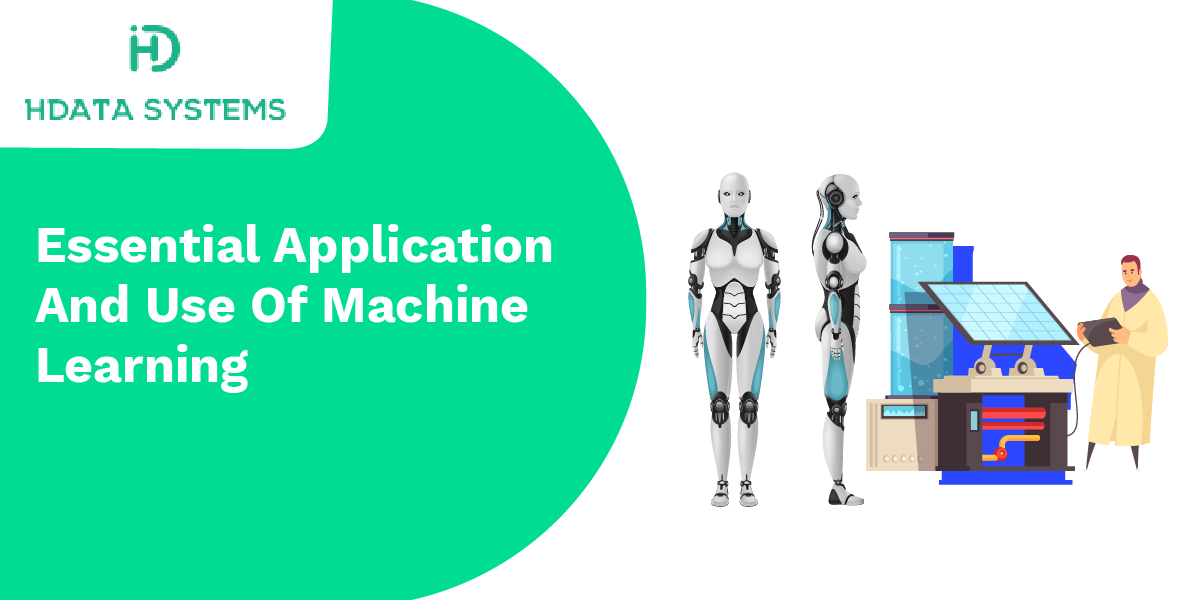“Machine learning is a field of artificial intelligence. It uses statistical techniques to give computers the ability to learn from data without being explicitly programmed.”This definition comes from Arthur Samuel, the inventor of the term and one of the pioneers in the field of artificial intelligence.
The basic definition dates from 1959 and has not lost its validity since then. Since then, however, the framework conditions, possibilities and areas of application for machine learning have changed. Today, machine learning systems can process enormous amounts of data, make very precise predictions from them and are therefore very versatile.
How does a machine learn?
Machine learning is a process. The ability of a machine to recognize patterns, interpret them correctly and then react correctly is only created by training with data.
Machine learning service process can be done in two different ways.
With monitored learning, the machine is also formulated with the correct output for every input. A good example of supervised machine learning is the recognition of handwritten letters. Images of a handwritten ABC are fed into the machine learning system. The metadata for each of these images contains the information formulated by a human “teacher”, which letter it is. In this way, the system learns in the training phase the different forms in which people write a letter. Once the training is complete, the system should be able to abstract from what it has learned and clearly recognize handwriting.
This contrasts with an approach called unsupervised learning. While supervised learning discovers patterns where the system has a record of “correct answers,” unsupervised learning, machine learning systems find patterns where we don't. This may be because the “right answers” are not observable or not possible, or because there is not even a “right answer” for a particular problem. The algorithms are on their own to recognize structures and similarities in the data and to create a learning model from them. As a result, such systems are often a black box, in which the programmer does not know which assumptions the system has learned from the data.
Unsupervised machine learning is used in practice, for example, where providers of marketing data scan huge data records and classify users into specific clusters.
Application and use of machine learning
The foundations for machine learning were laid in the middle of the past century. But the potential of the approach has only unfolded in recent years. Several trends have favored the rapid development of the field and the possible uses of machine learning in recent years. As digitalization progresses, more and more data is available that can be used for learning.
At the same time, computers are becoming more powerful in order to process large amounts of data. Machine learning is also experiencing a surge, since complex graphics processors with multiple cores allow parallel calculations.
As the size of the database increases, so does the need to interpret, organize and process the data. Scientific developments quickly found their way into commercially used applications.
• Spam detection in emails
• Image recognition in Google
• Predict stock market prices or demand for products
• Text translation of applications like Deep Learning
• Text classification, for example in online price comparison sites or news portals
• Voice recognition / voice assistant as in Siri, Cortana, Alexa etc.
• Fraud detection, e.g. for payment providers and in e-commerce
Other terms related to machine learning
The more extensively artificial intelligence development and machine learning penetrate people's everyday lives, the more often the associated terms appear in the media.
Blurring and confusion often occur between the concepts of artificial intelligence, machine learning and deep learning. The connection is basically simple. The largest outer doll is the field of artificial intelligence. Machine learning is a sub-area of artificial intelligence, while deep learning is considered a sub-discipline of machine learning.
The “deep” in deep learning refers to the number of layers through which the data is transformed. Deep learning uses hierarchical layers or a hierarchy to recognize patterns in the machine learning process. For example, in a deep neural network for image recognition, simple edges and contrasts are first recognized in an image, while later layers capture complex structures.
Automatic machine learning simplifies the setup of a machine learning system through extensive automation. Either the entire process or selected steps are automated, so that an expert is not required for each module and learning step. For example, the preparation of the data, the selection of features or the model selection can be automated. The Google service Cloud AutoML, for example, promises that the solution enables users with little programming knowledge to create machine learning systems such as translation models or natural language models.
Another term that is often used in connection with machine learning is data mining. There are many similarities, but also significant differences, between machine learning and data mining. Machine learning is based on known features and focuses on predictions. In contrast, data mining focuses on discovering unknown properties in the data.
Harnil Oza is a CEO of HData Systems - Data Science Company & Hyperlink InfoSystem a top mobile app development company in Canada, USA, UK, and India having a team of best app developers who deliver best mobile solutions mainly on Android and iOS platform and also listed as one of the top app development companies by leading research platform.


